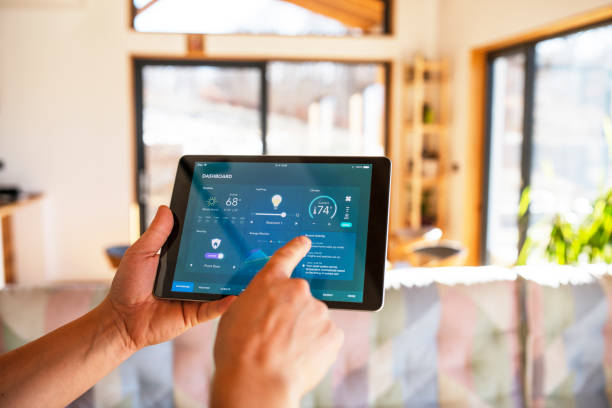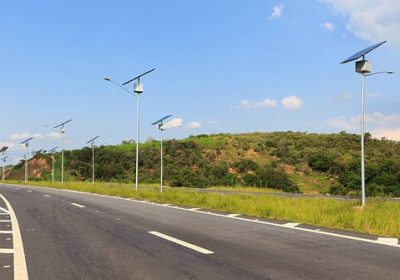Smart Home Devices: Transforming Modern Living Spaces with IoT and Automation

The Internet of Things (IoT) and automation have revolutionized the way we live our lives. With the advent of smart home devices, the concept of a connected home has become a reality. Smart home devices use IoT technology to connect various devices and appliances within the home, providing homeowners with greater control and automation. In this article, we will explore the ways in which smart home devices are transforming modern living spaces.
Smart Home Devices: Transforming Modern Living Spaces
Smart home devices come in various forms, ranging from smart lighting to smart thermostats, security cameras, and smart home hubs. These devices can be controlled using a smartphone app or voice commands, making it easier for homeowners to manage their homes. Smart home devices can be integrated with each other, creating a network of connected devices that can be controlled using a single device. This level of automation has transformed modern living spaces, providing homeowners with a greater sense of control, convenience, and comfort.
Types of Smart Home Devices
Smart Thermostats
One of the most popular smart home devices is the smart thermostat. A smart thermostat allows homeowners to control the temperature of their homes remotely, using a smartphone app. This means that homeowners can adjust the temperature of their homes even when they are not physically present in the house. Smart thermostats can also learn the habits of the homeowner, automatically adjusting the temperature based on their preferences. This level of automation has helped homeowners to save money on energy bills by reducing energy consumption when the home is unoccupied.
Smart Lighting
Another popular smart home device is smart lighting. Smart lighting allows homeowners to control the lights in their homes remotely, using a smartphone app. This means that homeowners can turn off the lights even when they are not in the house, reducing energy consumption and saving money on electricity bills. Smart lighting can also be programmed to turn on and off at specific times, creating the illusion that the homeowner is present in the house, even when they are not.
Smart Security Cameras
Smart security cameras are another popular smart home device. Smart security cameras provide homeowners with greater peace of mind by allowing them to monitor their homes remotely, using a smartphone app. This means that homeowners can check on their homes even when they are not physically present in the house. Smart security cameras can also send notifications to the homeowner when motion is detected, providing an added layer of security.
Smart Home Hubs
Smart home hubs are another important smart home device. Smart home hubs act as a central point of control for all the smart home devices in the house. This means that homeowners can control all the devices in the house using a single device, making it easier to manage their homes. Smart home hubs can be voice-controlled, making it even easier to control the devices in the house.
Advantages of Smart Home Devices
One of the biggest advantages of smart home devices is the level of automation they provide. Smart home devices can be programmed to perform specific tasks automatically, reducing the need for manual intervention. For example, a smart thermostat can be programmed to adjust the temperature of the home automatically, based on the time of day or the presence of the homeowner. Similarly, smart lighting can be programmed to turn on and off automatically, based on the time of day or the presence of the homeowner.
The level of automation provided by smart home devices has transformed modern living spaces, making homes more convenient and comfortable to live in. For example, a homeowner can set the temperature of their home to their preferred level before they arrive, ensuring that the home is comfortable when they walk in. Similarly, a homeowner can set the lights in their home to turn on automatically when they enter a room, making it easier to navigate the house.
Smart home devices have also transformed the way we interact with our homes. Voice-controlled smart home devices allow homeowners to control their homes using voice commands, making it even easier to manage their homes. This level of convenience has made smart home devices more accessible to a wider audience, making it easier for more people to experience the benefits of a connected home.
Impact on Energy Consumption and Environmental Sustainability
In addition to the convenience and automation provided by smart home devices, they also have a significant impact on energy consumption and environmental sustainability. By reducing energy consumption, smart home devices help homeowners save money on energy bills while also reducing their carbon footprint. For example, a smart thermostat can automatically adjust the temperature of the home based on the weather, reducing the need for excessive heating or cooling. Similarly, smart lighting can be programmed to turn off automatically when a room is unoccupied, reducing energy waste.
The use of smart home devices is also transforming the way we think about home security. Smart security cameras and smart doorbells allow homeowners to monitor their homes remotely, providing an added layer of security. This level of security has become increasingly important as more people work from home and spend more time indoors. Smart home devices have made it easier for homeowners to monitor their homes and keep their families safe.
Integration with Artificial Intelligence and Machine Learning Algorithms
The integration of smart home devices with artificial intelligence (AI) and machine learning algorithms is another exciting development in the world of smart homes. AI and machine learning algorithms can learn the habits of the homeowner, automatically adjusting the settings of the devices to provide a more personalized experience. For example, a smart thermostat can learn the habits of the homeowner and automatically adjust the temperature of the home based on their preferences. Similarly, smart lighting can be programmed to adjust the brightness and color temperature of the lights based on the time of day and the homeowner’s preferences.
The use of AI and machine learning algorithms is also transforming the way we think about home automation. Smart home devices can be programmed to perform specific tasks automatically, reducing the need for manual intervention. However, with the integration of AI and machine learning algorithms, smart home devices can become even more intelligent and autonomous, learning the habits of the homeowner and automatically adjusting the settings of the devices to provide a more personalized experience.
Challenges of Smart Home Devices
One of the challenges of smart home devices is the issue of compatibility. Smart home devices come from various manufacturers, and not all devices are compatible with each other. This can create challenges for homeowners who want to create a network of connected devices in their homes. However, the use of smart home hubs has made it easier for homeowners to manage their devices and ensure compatibility.
Privacy and Security Concerns
Privacy and security are also important concerns when it comes to smart home devices. Smart home devices are connected to the internet, and as such, they are vulnerable to cyber-attacks. Manufacturers of smart home devices must ensure that their devices are secure and that they comply with data privacy regulations. Homeowners must also take steps to ensure that their devices are secure, such as changing default passwords and keeping their software up to date.
Future Developments
As smart home devices become increasingly popular, we can expect to see more advancements and innovations in this area. For example, the use of voice-activated assistants like Amazon Alexa and Google Assistant has made it easier for homeowners to control their smart home devices using voice commands. In the future, we may see the development of even more advanced voice-activated assistants that can understand natural language and provide more personalized assistance.
We can also expect to see more integration between smart home devices and other technologies, such as wearable devices and autonomous vehicles. For example, a smart home device could detect that the homeowner is leaving the house and automatically adjust the temperature, turn off the lights, and lock the doors. Similarly, a smart home device could detect when the homeowner is returning home and automatically adjust the settings to create a welcoming environment.
Smart Home Devices and Healthcare
Another area of development for smart home devices is in the healthcare industry. Smart home devices can be used to monitor the health and wellbeing of elderly or disabled individuals, providing them with greater independence and quality of life. For example, a smart home device could detect if an elderly person has fallen and alert emergency services. Smart home devices can also be used to monitor medication schedules and remind individuals to take their medication.
Ethical Implications
As the technology continues to evolve, it is important for manufacturers and homeowners to consider the potential ethical implications of smart home devices. For example, the use of smart home devices raises concerns about data privacy, as these devices collect and transmit data about the homeowner’s habits and behaviors. It is important for manufacturers to be transparent about how this data is collected, stored, and used.
Smart home devices also raise questions about the potential for job displacement, as automation reduces the need for manual labor. As more tasks are automated, we may see a shift in the types of jobs available, and it is important for policymakers to consider the potential impact of this on the workforce.
Conclusion
In conclusion, smart home devices have transformed modern living spaces by providing homeowners with greater control, convenience, and comfort. These devices have a significant impact on energy consumption and environmental sustainability while also offering new opportunities for healthcare and increased independence for elderly and disabled individuals. However, as with any new technology, it is important to consider the potential ethical implications and take steps to ensure privacy and security.
Article suggested by Ward Builders









